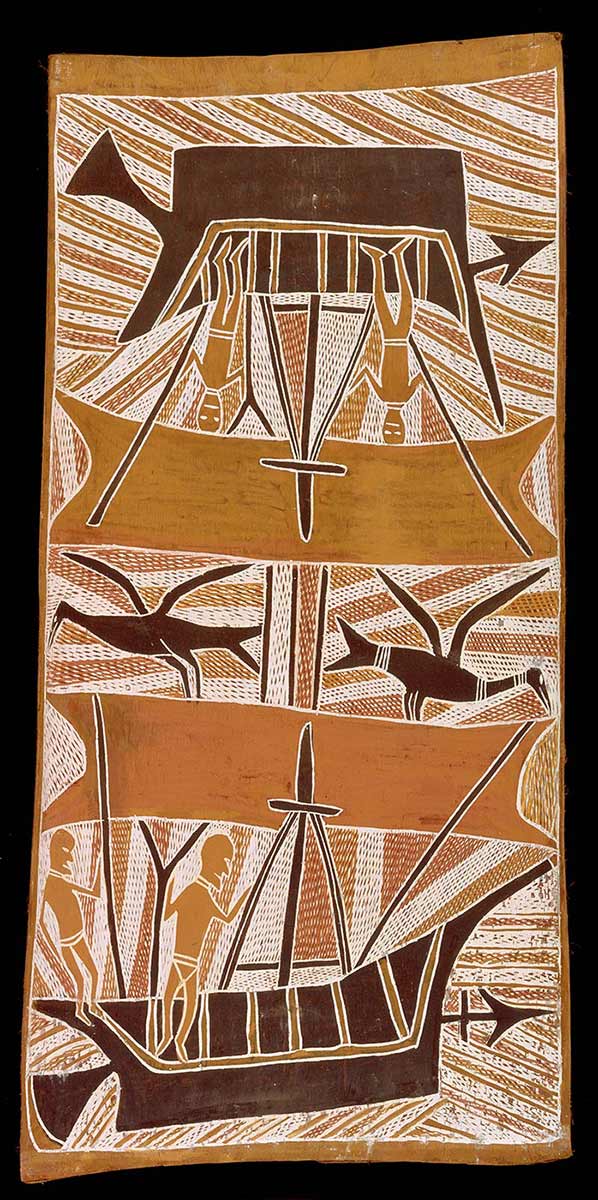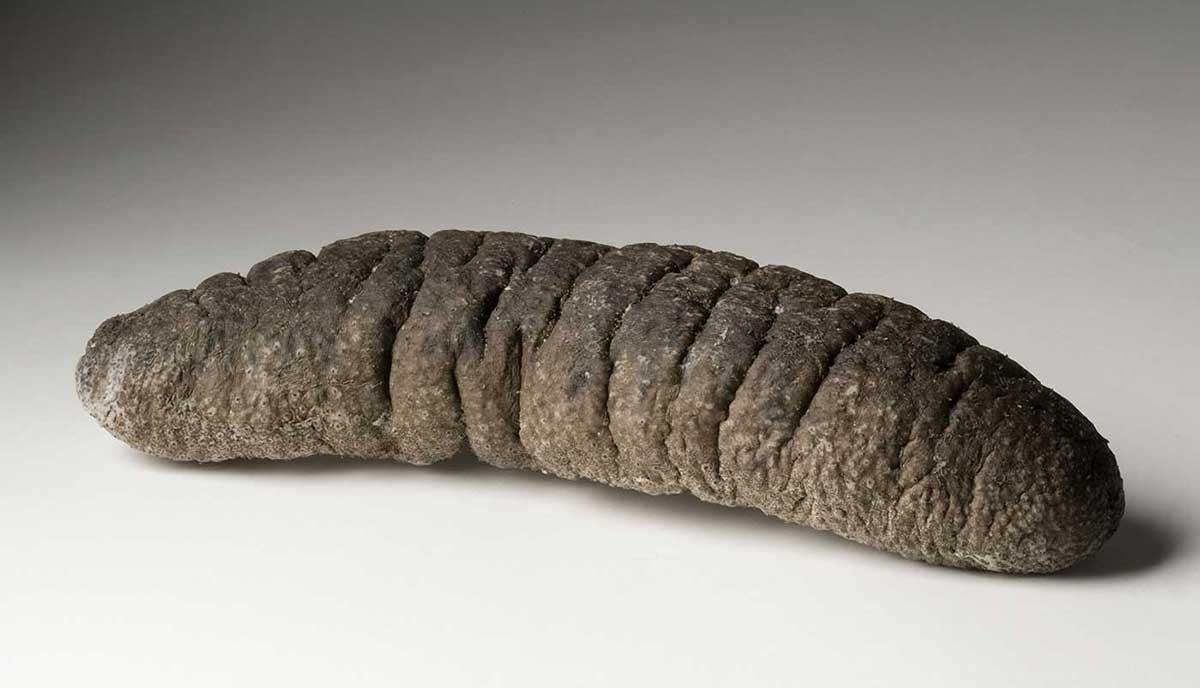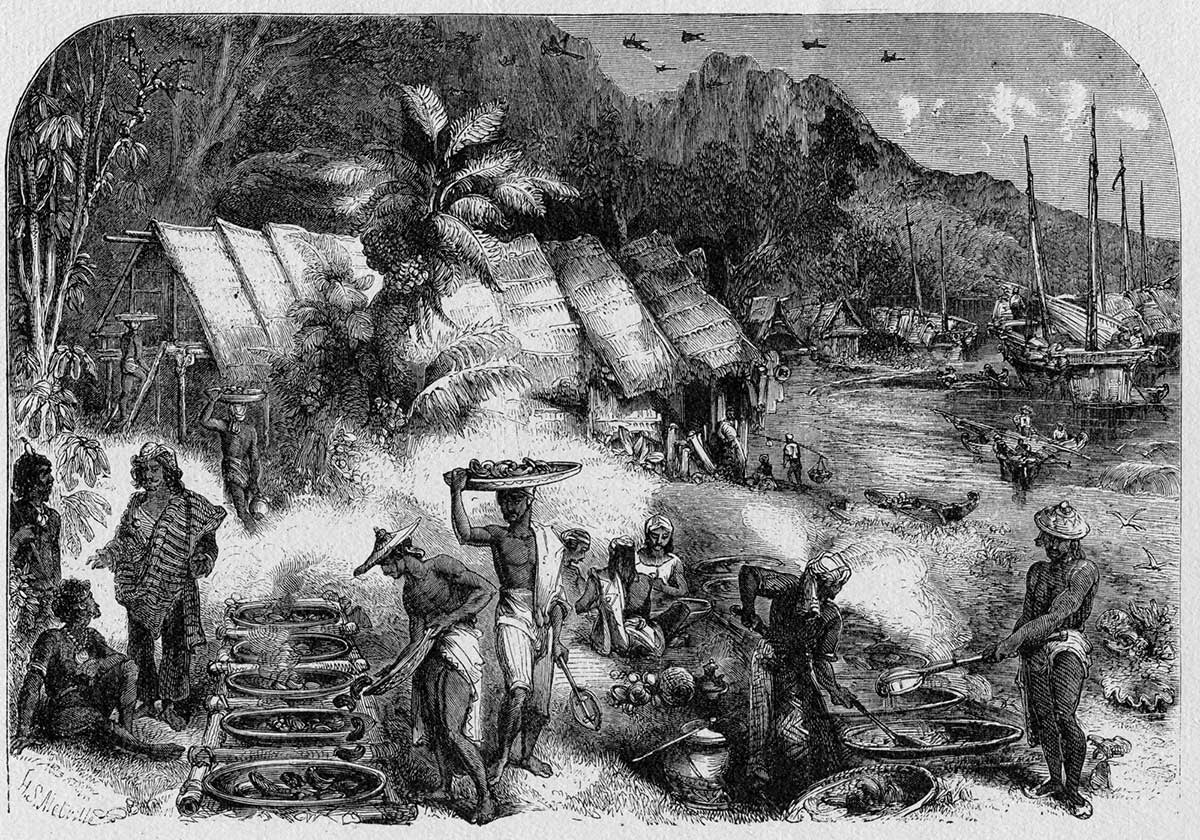Contact between Australia and Asia pre-dates European settlement.
From at least 1700 until 1907, hundreds of fishermen sailed each year from Makassar on the island of Sulawesi (now Indonesia) to the Arnhem Land coast, an area they called Marege.
Makasar traded with Aboriginal people for trepang (sea cucumber), which they boiled down, dried on their boats and traded with China where it is still used for food and medicine.
The Makasar did not settle in Arnhem Land but they did have an influence on the Yolŋu people’s society and ritual.
Matthew Flinders, 1803:
... we learned that they were prows from Macassar, and the six Malay commanders shortly afterwards came on board in a canoe. It happened fortunately that my cook was a Malay, and through his means I was able to communicate with them. The chief of the six prows was a short, elderly man, named Pobassoo; he said there were upon the coast, in different divisions, sixty prows ...

Trade and transformation
From at least 1700 until 1907, hundreds of fishermen sailed each year from Makassar on the island of Sulawesi (now Indonesia) to the northern Australian coast, an area they called 'Marege’.
The fishermen arrived each December and camped along the Arnhem Land coast, catching, boiling and drying trepang. They met, traded and worked with local Aboriginal people.
The months that the Makasar spent harvesting in the coastal waters of northern Australia were busy ones. Fishermen speared the trepang from their praus (boats) or dived down to spike them with weighted harpoons.
On shore, trepang were gutted and boiled in sea water in iron cauldrons, then buried in hot sand to cool slowly. After some time, they were dug up and their chalky skin washed away with salt water.
Finally, the trepang were dried in the sun or smoked over a slow fire in temporary huts made of bamboo and mats.
Then, each April, as the monsoon winds began to blow, the fishermen departed, returning to Makassar with the holds of their boats holds carrying trepang to be traded north to China.
Influence on Yolŋu society and ritual
The Makasar did not settle in Arnhem Land but they did have an influence on Yolŋu society and ritual. They introduced calico, tobacco and smoking pipes, and words that are still in use today, such as rrupia (money).
Most importantly they introduced an item of technology that transformed Yolŋu life – metal. Metal blades, knives and axes made everyday practices easier for Yolŋu, from cutting food to making large dugout canoes and complex wooden sculptures.

Trade with China
In China, trepang was considered a culinary delight and an aphrodisiac.
By the mid-19th century the fleet from Makassar that visited Arnhem Land each year was supplying about 900 tons of trepang – about one-third of the Chinese demand.
By the end of the 19th century visits from Makasar to northern Australia to gather trepang were declining.
After 1901 the newly formed Australian Government banned trepangers from Makassar in order to protect Australia’s ‘territorial integrity’ and to encourage a local trepang industry. In 1907 the last prau from Makassar visited Arnhem Land.
A note on spelling: Makassar is used when referring to the place and Makasar when referring to its people. Macassan and Macassar are historic forms, often used in the context of trepangers in northern Australia.
In our collection
- Last updated: 9 July 2008
- 1 programs
Explore Defining Moments
References
Marshall Clark and Sally K May (eds), 'Macassan History and Heritage', ANU Press, Canberra, 2013
Regina Tranter, 'Turning the map upside down', Griffith Review, no. 9, August 2006
Charles Campbell Macknight, The Voyage to Marege: Macassan Trepangers in Northern Australia, Melbourne University Press, Melbourne, 1976.
